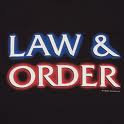Hollywood and the Constitution
In a fascinating article, “Oil and Water Do Not Mix: Constitutional Law and American Popular Culture,” recently posted as part of the Marquette Legal Studies Paper Series, Professor David Papke argues that American movies and television series have embarrassingly failed to capture what he refers to as “meaningful constitutional deliberation and discussion.” Focusing on the movies First Monday in October and The Pelican Brief and the television series The Court and First Monday, Papke demonstrates how entertainment industry conventions make it impossible to seriously examine the process of constitutional deliberation in popular media.
While I agree with Professor Papke that cinematic efforts involving the Supreme Court have resulted in dismal failures, there have been Hollywood movies that have addressed “constitutional” questions with some insight and sophistication. The key, it seems, is to focus on the constitutional issue itself rather than on the court that decides it.
I have in the past incorporated a few films into my American Constitutional History class (though not this past semester), and I would someday like to offer a seminar that focuses on the treatment of constitutional issues in film. An incomplete list of such films and their subject matter is set out below:
The Birth of a Nation (1915) – the meaning of the Civil War for American federalism
Gabriel Over the White House (1933) – the limits of presidential power in a time of crisis
Judge Priest (1934) – racial accommodation and the Constitution in the Jim Crow era
Mr. Smith Goes to Washington (1939) – the limitations of the American system of checks and balances
Meet John Doe (1941) – the problem of manipulation of public opinion in mass society
Inherit the Wind (1960) – the meaning of freedom of religion in a democracy
Dirty Harry (1971) – the legitimacy of the Warren Court’s expansion of the rights of criminal defendants
Walking Tall (1973) – the legitimacy of the Warren Court’s contraction of local and regional autonomy
Absence of Malice (1981) – the liability of the press for injuries inflicted by inaccurate reporting
Poletown Lives! (1983) – the limits of the eminent domain power; technically a documentary, but actually structured like a commercial film
Separate But Equal (1991) – the legitimacy of racial distinctions under the constitution (a partially fictionalized account of the case of Briggs v. Elliot, one of the cases decided with Brown v. Board of Education)
The only one of the above films that devotes a significant amount of time to the United States Supreme Court is the final one, Separate But Equal, and the depiction of the Court is the weakest part of the movie. The justices come off as narrowly drawn stereotypes, in contrast to the more fully developed parties to the case and their lawyers (although Sidney Poitier as Thurgood Marshall takes a little getting used to).


